As promised, here is the follow-up to our original function test review on the Savage A17 in 17 Mach2. This is a review and hunt report, with accuracy information from testing four different types of ammunition (however, we are only relying on three of the brands/specs of ammo, more on that later). As you may remember, we were sent a prototype Savage A17 in 17 Mach2, so we took it out and literally shot over 1000 rounds to test the function of this new rifle. It ran perfectly, without a hiccup!
**Full Review and Hunt Video Below**
The next step was to get a hold of a factory version and do some serious accuracy testing, as well as use it for various hunts around the Rocky Mountain and PNW states. We requested a factory rifle (“pull a box off the shelf and send it to us”) from Savage. They did just that and after taking it apart, giving it a thorough cleaning and torquing everything back to spec, we put this new rifle through our rigorous testing. The rifle performed well and did not disappoint!
Savage A17 – 17 Mach2 Specifications:
Weight (lb)/(kg): 5.7 / 2.59
Accuracy Testing:
Our initial accuracy testing included four different types of 17 Mach2 ammunition. These results are from five – 5-shot groups at 75 yards. Why 75 yards? Because the majority of our shots using this rifle in the field would be <75 yards:
- CCI VMax – 17 grain – 2010fps
- CCI VNT – 17 grain – 2010fps
- Hornady VMax – 17grain – 2100fps
- Hornady NTX – 15.5 grain – 2050fps
After shooting the groups and seeing the Hornady NTX ammo open up quite a bit and lose consistency, we looked over the empty brass, as well as the new brass in the box and realized that the necks had split while in the box. Although we included our results in the graph below, we are discounting them as an anomaly.
As you can see by the results, the CCI VNT 17 grain ammunition did very well in our testing. The results caused us to chose that ammo to use on our various hunts. During our accuracy testing, we again did not run into any type of function issues with this new factory rifle. All in all, the official factory rifle did well at the range and was ready for the field. The rifle was cleaned and properly lubed about every 200 rounds.
Hunt Report:
We traveled quite a bit last year and I made sure to bring the Mach2 A17 with us everywhere. It was used to shoot Richardson’s Ground Squirrels in Montana, Whitetail Prairie Dogs in Wyoming, Northern Paiute Ground Squirrels in Idaho, Belding’s Ground Squirrels and Jack Rabbits in Northern Nevada and Rockchuck in Idaho. The rifle performed flawlessly in the field, with zero issues in function, or accuracy. It was shot by three different members of my crew and included some extended shots on Prairie Dog and Richardson’s Ground Squirrels (150-200 yards).
Our hunt in Montana was an interesting one. We fought with wind and a lot of dust. The majority of our hunts were spot and stalk, shooting from a set of shooting sticks, or a fence post, if one happened to be available. Richardson’s Ground Squirrels are slightly smaller than the Belding’s Ground Squirrels and are found at higher elevations where there are thick grasses and rolling hills. Our shoots were anywhere from 20 yards, out to 200 yards. The A17 and CCI VNT ammo was a great combo and proper shot placement meant anchoring a lot of Ground Squirrels over the two days we hunted.
If you’ve ever hunted Wyoming, then you know that the biggest obstacle to having a great hunt is the weather. If it isn’t the thunder storms, snow, ice and sleet, it is the WIND! The wind proved to be our nemesis most of the hunt, making shooting the Whitetail Prairie Dogs that live in the Western end of the state, very difficult to hunt with rimfires. This trip, David H. was doing the shooting and made some great shots, despite the wind. One shot was taken in the prone position and the A17 made quick work of a Prairie Dog that was across a large opening. It was a laser like shot, with the PD rolling over when the little VNT bullet hit! Add a few more like that and it turned out to be a fun little walk through a PD colony with the Savage.
The Main Event – Idaho Rockchucks:
My friend Kenny invited a few of us to some farms where he had permission to shoot Rockchucks. I had hunted with him before, so I knew of one area that held a bunch of ‘chucks where nothing but a rimfire would do. It was a deep impression, filled with the rim/lava rocks that the Rockchucks loved to use as their home base, while raiding the alfalfa fields just a few yards away. They had everything a Rockchuck needed to survive; food, shelter and an escape route that would be impossible for the average coyote, or badger, to follow easily.
When we arrived at the farm, it was late in the day. We had spent the hours beforehand, making long shots on wary Rockchucks who would disappear out of sight for hours if they felt something was wrong. These ‘chucks were a little different. They felt that their shelter would protect them, so even after CameraMan Tom and I set-up a mere 70 yards away, they still popped back up to see what we were up to. I got my Bog-pod bi-pod set-up and positioned myself a few feet away from the camera. I needed to get some clearance from the large sage brush that surrounded the Rockchuck’s enclave. Once we were in place, it only took a few minutes for the ‘chucks to start popping up again. The first was a large male that crawled up on the backside of a big rock. His head was almost flat against the rock, so any type of body shot would have been impossible. I felt confidant enough that head, or neck shots were going to be the shots I’d take, because a body shot may not have anchored them in place. If you’ve ever walked through one of these Rockchuck “apartments”, you would realize how many spots there were where even a well-placed shot on a ‘chuck would risk them sliding down into one of the holes between the rocks. It was DRT, or nothing for me!
As the large male adjusted his head, he lifted it enough to give me a shot right under his chin. I squeezed off the round and watched through the scope as the Rockchuck fell backwards when the bullet hit home. Based on his reaction and what I was seeing through the scope, the ‘chuck was instantly dead and going through the last bits of its “death throes” (in this case, meaning the violent muscle spasms immediately after a death involving the brain). He was DRT. Rockchuck number two was a bit tricky. I only had a small portion of his head showing between two rocks, so at the shot I saw the lava rock in front of the chuck splatter. I had held too low and missed! However, the Rockchuck ran about 10 yards back and stopped to take a look at what just happened. The fast follow-up of the semi-auto A17 allowed me to put the bullet where it needed to be and drop the second ‘chuck like a bag of laundry! DRT number two.
The last Rockchuck I shot was on the move. He must have heard the commotion of the shots and took off to get into the safety of his hole. As he moved through the rocks, I didn’t not feel comfortable taking a shot. There were too many obstacles to ensure a clean hit. Suddenly, he hit an open area and just stopped. Tom confirmed that he had him on video, I placed my crosshairs just behind and below his right ear and pulled the trigger. At the shot, the Rockchuck just dropped. The bullet found its mark, severing his spine and taking out an internal organ on the way out. When it dropped, I could see the blood start to pour out of the 0.172″ hole the little Mach2 bullet made. Another DRT ‘chuck and I was very happy with the results!
Final Thoughts:
While I took pictures and collected the dead ‘chucks, I thought about how the little A17 performed. When you are in the middle of the hunt, you don’t think about stuff like that. Especially, when it is fast and furious, like this turned out to be. You put all your focus on what you are aiming at, where you are holding your crosshairs and deciding to pull the trigger to make the most humane shot possible. You are definitely not thinking, hoping, or praying that the firearm you are shooting will perform as expected. You assume it will and act based off those assumptions. If you are shooting a firearm you have confidence in, then the rest is a matter of you controlling your brain/body and making the shot. After shooting the little Savage A17 for months, my confidence in it grew until it never waned. I knew it would function properly and I knew it would hit where I was aiming. That in itself, is the answer to why this is a positive review on the Savage A17 in 17 Mach2 (17HM2).
This was the sixth A17 I’ve had the pleasure of shooting out in the field. They are not expensive guns, nor are they built like tanks, as some semi-auto .17 caliber rifles are. However, every one I have shot has performed well. Add to that, the ever growing factory and aftermarket options make choosing one that will be a perfect fit for your needs, an easy task. I really like this rifle and will be purchasing it from Savage so I can add it to my rimfire hunting rifle collection. It’s too fun to pass up…
- A Unique Rifle – CZ Model 527 in .20 Hornet Ackley Improved - November 25, 2025
- My Favorite New Factory Rifles of 2025 - October 28, 2025
- Winchester XPert Rifle in 17WSM – A Summary of an Upcoming Review - September 16, 2025

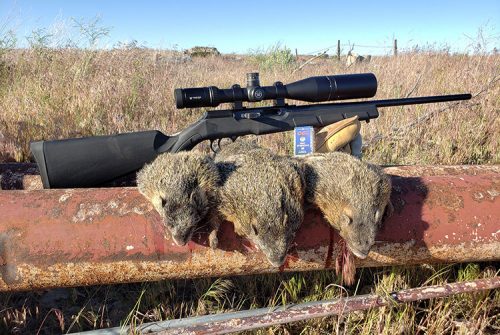
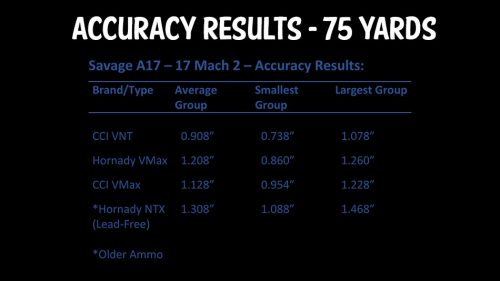
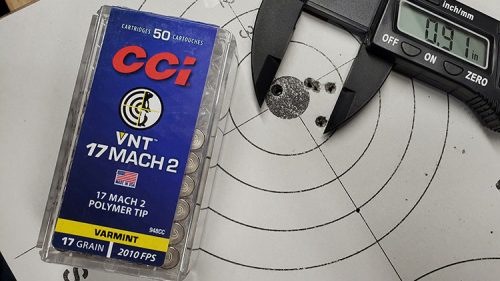
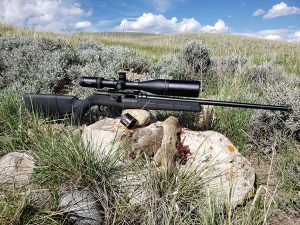
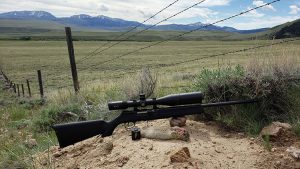
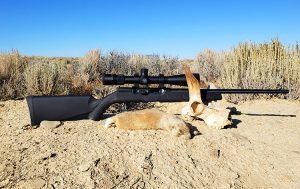
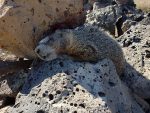
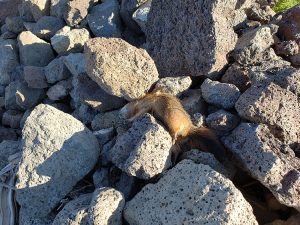
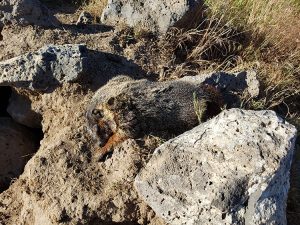
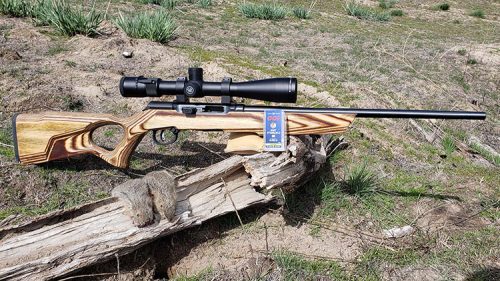
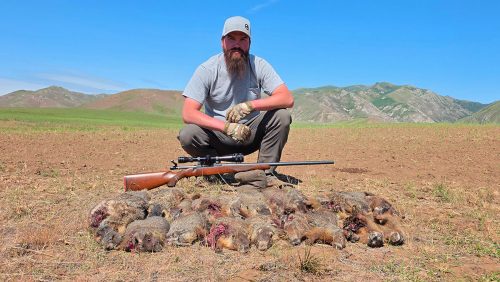
Leave a Reply
You must be logged in to post a comment